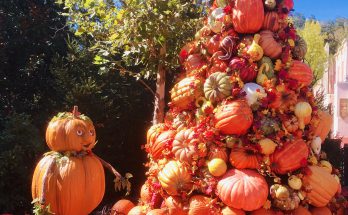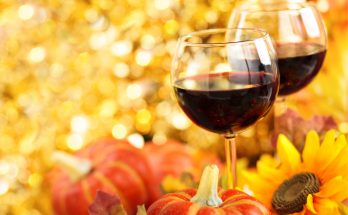If you’ve ever been intimidated by rows of wine bottles at your local wine shop or had to rely on a server’s recommendations at a restaurant to choose a wine to go with your meal, this guide is for you. The world of wine is exciting and diverse but can be daunting. This guide will take the fear out of choosing a wine, taking you from novice to comfortable with the basics.
How it’s made
Wine is made by pressing the juice out of grapes with a machine (but the grapes used to be stomped on to get the juice out). All grape juice when it comes out of the grape is white. Red and rosé wines get their color from exposure to the grape skins, so the juice and the skins soak together.
The longer the skins are exposed to the juice, the redder the wine will become. As an example, most rosé wines are made with red skins touching the juice for between two and twenty hours, and red wines can sit with their skins anywhere between three and one hundred days.
The grape juice is put through a fermentation process by adding special strains of yeast and sugar. When the yeast dies, the particles remaining in the wine are called lees, and those are removed, sometimes using egg whites or other proteins that the yeast are attracted to, in a process called fining.
Fining clarifies and stabilizes the wine. Then both white and red wines can be put in American or French oak barrels and aged for anywhere from three to 30 months, depending on what flavors the winemaker wants to create and draw out. Wine can also not be aged at all, though most wines get at least a little aging before being bottled.
In general, grapes with a greenish or yellowish skin are used to make white wines and grapes with a red or purple skin are used to make red wines.
The new v. old world
New World wines are named for the type of grape (called the varietal) that they’re made of, for example, a Chardonnay. Old World wines will be named for the region they come from, for example, a Chardonnay from the Burgundy region of France will be labeled as a Burgundy, and a Grenache from the Rioja region of Spain is called a Rioja.
Wines are sometimes called Old World when they come from places in Europe, like Italy, France, Germany, Spain, and Portugal, while New World wines come from the United States, Argentina, Australia, Canada, Mexico, Chile, New Zealand, and South Africa.
How do you read a wine label?
There will be a few basic components that you’ll find on all labels. You’ll find the wine’s brand name or the producer’s name, and sometimes that brand name is actually produced by a larger wine company.
You’ll also find the region the wine comes from. That can be a larger area that is rather vague (like California) or an AVA that is more specific (like a particular vineyard).
The varietal may be on the label of new world wines, or you may find the appellation. An appellation is a type of credential system followed in 15 countries, and the rules can include which grapes are allowed to be in the wine, crop yield, percentage of alcohol in a wine, and the level of quality.
While that may sound confusing, the appellation can give you clues about what varietal is in the bottle, for example, wines labeled Chablis will likely be unoaked chardonnay grapes, even though that’s not specified. There are lots of online resources that include charts or maps outlining a wine region’s appellations and the types of grapes grown there.
Taste is in the tongue of the beholder
When it comes to wine tasting, it couldn’t be more simple, really — do you like what you’re tasting or not? There’s no right or wrong way to taste wine, it just depends on your own preferences. There are so many options to try and discover while you learn about which wines you love. There’s no wrong way to describe what you’re tasting.
When it comes to describing traits that wine has, here are some helpful notes about common varietals. After you taste a few bottles and figure out what types of wine you like best, you’ll have more confidence in ordering different wines and even on taking a chance when buying a new bottle.
White Wines:
Chardonnay: dry, medium-to full-bodied, can have notes of apple and lemon or pineapple and may have vanilla notes if it has been oaked.
Pinot Grigio/Gris: dry, light-bodied, has notes of citrus, pear, or peaches. Can range from melon to honeysuckle.
Riesling: Medium-bodied, with notes of green apple, peach and lime. Riesling is produced around the world, but German rieslings will have a high minerality or stone flavor, while mature versions may have hints of petrol.
Moscato: sweet, medium-bodied wine with orange, rose, elderflower, and peach notes.
Sauvignon Blanc: Medium-bodied, can have notes of lime, passionfruit, green apple, green pepper and cut grass.
Red Wines:
Cabernet Sauvignon: Full-bodied, with notes of blackberry, plum, black cherry, and a subtle licorice.
Merlot: Medium-bodied, dry, with flavors of cocoa, black cherry, and plum with some vanilla or cedar if it has been oaked.
Malbec: Full-bodied, dry, jammy, with notes of vanilla, tobacco, and dark chocolate.
Pinot Noir: Dry, light-bodied, with notes of cherry, mushroom, earth, and vanilla when it has been oaked.
Zinfandel: Medium-to full-bodied wine with notes of black pepper, jam, blackberry, licorice, cherry, and plum.
Syrah: Full-bodied, with notes of chocolate, blueberry, plum, smoke, and cocoa.



